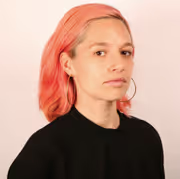Things We Dare Not Do Discussion Guide Discussion Prompts
Discussion Prompts

STARTING THE CONVERSATION
Immediately after the film, you may want to give people a few quiet moments to reflect on what they have seen. You could pose a general question (examples below) and give people some time to themselves to jot down or think about their answers before opening the discussion. Alternatively, you could ask participants to share their thoughts with a partner before starting a group discussion.
Close your eyes. What is one image that comes to mind from the film? What mood does that image call up for you?
What do you think is coming next for Dayanara in her life? Both in the daily reality of work, home, relationships, and in the realm of her emotional life?
In one sentence, what do you think this movie is about?
GENDER IDENTITY
Much of the movie centers on the interactions of the group of children of which Ñoño is often the leader and teacher. Why do you think the children are centered in a film that concludes with Ñoño’s “coming” out as transgender?
In what ways were gender norms present in the film? What was communicated to boys about being boys, and to girls about being girls? How were those messages communicated?
Is this film about being transgender? Did you notice if that term was said explicitly in the film?
How did you expect Ñoño’s parents to react when she asked their permission to dress as a woman? What stood out to you about the scene?
While once taboo, in many parts of the world girls and women now can wear pants without causing a social stir. Might it be possible that in not so long boys, no matter what their gender identity, can also wear skirts and dresses as simply a choice of fashion or comfort?
LGBTQIA+ IDENTITY IN RURAL CONTEXTS
Do you think Dayanara is accepted in her town? What impressions do you have of her role in the community?
We don’t receive much specific information about the town in which this film is set. Did you like being immersed into daily life without external context? Why or why not? Why do you think the filmmaker made that decision?
Do you think Dayanara will continue to live in her town once she begins dressing like a woman publicly? Why or why not?
LIVING AMONGST DANGER AND VIOLENCE
Do you think Dayanara feels safe in her community? Why or why not?
How did you feel when the festivities were interrupted by gun violence?
What moments in the film felt charged with threat or danger? What made them feel that way? (Likewise, what moments conveyed security, safety, peace? What made them feel that way?)
The filmmaker does not give much explanation for the shooting. Why do you think they made that choice? What effect does that have on you as the viewer?
What did the children’s conversations the next day tell you about their experience of violence?
Do you think Dayanara is “safe” as a transgender woman in her community. Why or why not? How do you define safety for her?
CONSIDERING THE ROLE OF DOCUMENTARY & REPRESENTATION
What sense do you get of the relationship between the filmmaker and the subjects of the film? What gave you that impression?
What effect do you think the filmmaker’s presence, with a camera, may have had on the scene in which Ñoño asks her parents for permission to dress as a woman?
The filmmaker spends a great deal of time filming children, including one scene in which a child is bathing. Did you feel that this was an ethical, filming relationship? Why or why not?
In a few moments, there is quiet dialogue between the filmmaker behind the camera and the people they are filming. Did you notice those moments? What did they add, or take away from, the overall film?
CLOSING ACTIVITY (Optional)
At the end of your discussion, to help people synthesize what they’ve experienced and move the focus from dialogue to action steps, you may want to choose one of these questions:
What does this film communicate about childhood, and about leaving childhood? By extension, what do we lose and what do we gain when we stop being children and become adults?
AFFIRMATION TO YOUR YOUNGER SELF
Ask all participants to think of an affirmation to their younger self: “What would you tell your younger self about being in the world, in your particular body, in your particular gender?” Share aloud around the circle.
